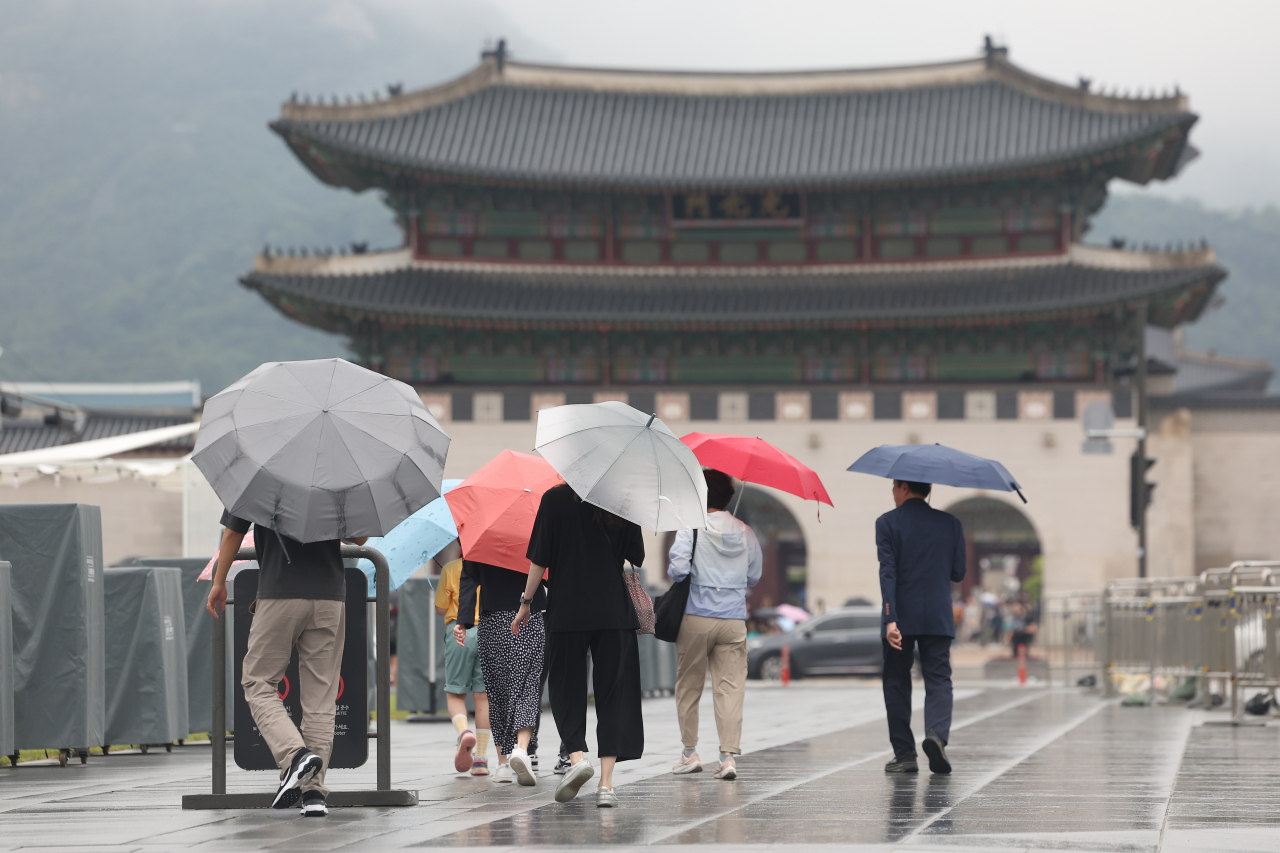 |
Pedestrians walk with umbrellas near Gwanghwamun Square in Seoul on Sunday. (Yonhap) |
Following heavy rain nationwide over the weekend, the Korea Meteorological Administration stated Monday that rainy weather would continue on Tuesday and Wednesday, with some regions more heavily hit than others.
Starting Tuesday morning, the Greater Seoul area -- Seoul, Incheon and Gyeonggi Province -- will see some 30 to 80 millimeters of rain, with heavily hit regions seeing up to 120 mm of rain. Other areas, including Gangwon Province and the South and North Chungcheong provinces will also see about 30 to 80 mm of rain, with heavily hit regions seeing up to 100 mm of rain.
Heavy rain already began falling on the South and North Jeolla provinces, South and North Gyeongsang provinces and Jeju Island on Monday, as low pressure moved toward the eastern coast. While the Jeolla and Gyeongsang areas may see 30 to 80 mm of rain, Jeju Island can expect to see 50 to 100 mm of rain, with heavily hit regions seeing up to 200 mm of torrential rain.
The KMA estimates that concentrated heavy rain will continue falling nationwide before coming to a temporary stop Wednesday morning. Other regions, like eastern parts of Gyeonggi Province and Gangwon Province, could see rainfall into Wednesday afternoon.
Rain clouds are expected to expand nationwide from Thursday to July 10. However, the KMA added that rainfall from Thursday onward will not be concentrated, but will most likely consist of intermittent showers.
Regarding the summer weather this year, the KMA told The Korea Herald that it is expected to have “similar or more rainfall than average, while also being hotter than usual.”
“While we can’t state the exact numbers, we have found through our studies that there is a 40 percent chance of precipitation exceeding the 30-year average in July, while temperatures in August after the monsoon season ends have a 50 percent chance of being higher (than average for the month),” said KMA official Woo Jin-kyu, citing the KMA’s three-month prediction report.
According to the report, the 30-year average for precipitation levels in July was between 245.9 mm and 308.2 mm, while the temperature average in August was 24.6 to 25.6 degrees Celsius.
This year’s monsoon season is likely to end late this month, predicted as July 20 for southern regions and July 25 for Greater Seoul, Gangwon Province and the Chungcheong provinces. After the monsoon season ends, the KMA anticipates the temperature rising due to increased humidity levels.







